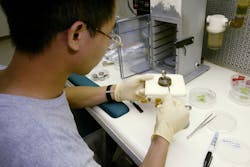What is Standing in the Way of New Product Growth?
April 7, 2015
2 min read
By weeding out losing projects early, top companies can focus on better execution, get products to market in half the time and generate twice the volume of new product profits.
I was recently talking with a frustrated new product executive from a large supplier of gasoline driven products sold through Big Box DIY retailers.
Her team had just spent three years and many millions of dollars designing and building a very innovative new product line moving the company into battery driven products. She was shocked when, at the last moment, her sales colleagues sank the deal with concerns about the technology partner’s supply reliability and the brand reputation effects they might suffer if the new technology was not as robust or serviceable as expected.
The sales team’s concerns may have been valid. After all, there is a tremendous amount of buying power consolidated in a handful of DIY retailers. But the question I had for her was why that concern had not been uncovered and dealt with before so much of their constrained engineering resources had been wasted.
This is a common issue in new products with some seriously negative effects for the companies that don’t manage for it.
A study from the telephone industry (Ogawa & Ketner, 1997) showed that the bottom 80% of performers canceled nearly 20% of their projects late in the process—after detailed design and engineering. Companies in the top 20% canceled the same percentage of projects overall, but they did so early—before wasting constrained resources.
By weeding out losing projects early, companies in the top 20% were able to focus on better execution, get products to market in half the time and generate twice the volume of new product profits.
Read more on new product development at IndustryWeek.
IndustryWeek is an NED companion site within Penton's Manufacturing & Supply Chain Group.
Her team had just spent three years and many millions of dollars designing and building a very innovative new product line moving the company into battery driven products. She was shocked when, at the last moment, her sales colleagues sank the deal with concerns about the technology partner’s supply reliability and the brand reputation effects they might suffer if the new technology was not as robust or serviceable as expected.
The sales team’s concerns may have been valid. After all, there is a tremendous amount of buying power consolidated in a handful of DIY retailers. But the question I had for her was why that concern had not been uncovered and dealt with before so much of their constrained engineering resources had been wasted.
This is a common issue in new products with some seriously negative effects for the companies that don’t manage for it.
A study from the telephone industry (Ogawa & Ketner, 1997) showed that the bottom 80% of performers canceled nearly 20% of their projects late in the process—after detailed design and engineering. Companies in the top 20% canceled the same percentage of projects overall, but they did so early—before wasting constrained resources.
By weeding out losing projects early, companies in the top 20% were able to focus on better execution, get products to market in half the time and generate twice the volume of new product profits.
Read more on new product development at IndustryWeek.
IndustryWeek is an NED companion site within Penton's Manufacturing & Supply Chain Group.
About the Author
Sign up for our eNewsletters
Get the latest news and updates
